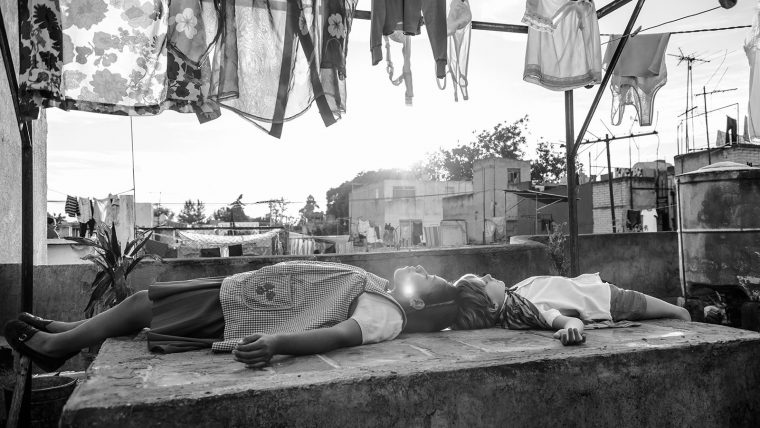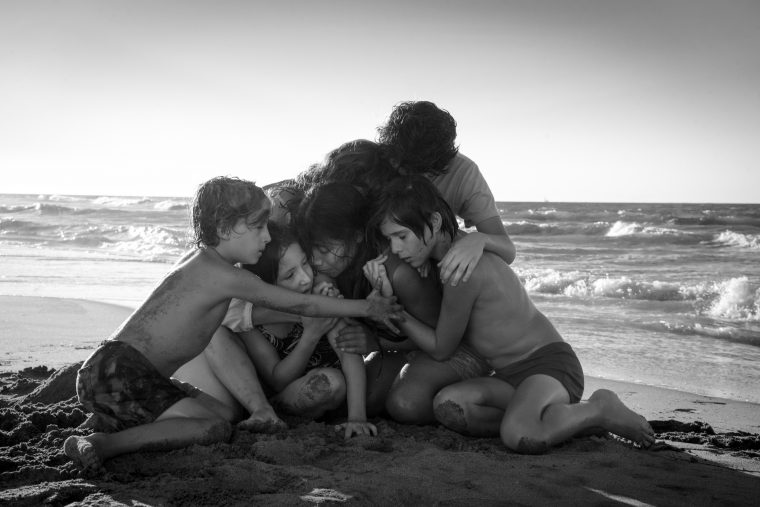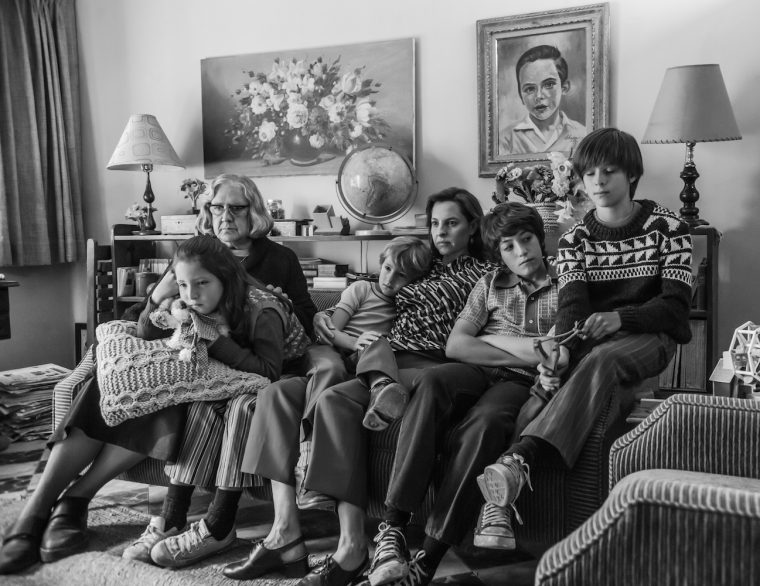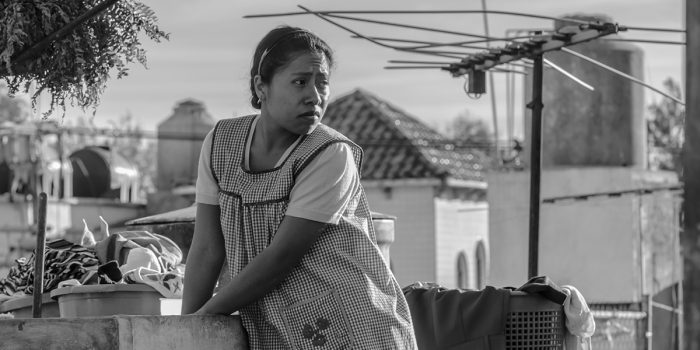"Cuarón’s gorgeous, revelatory opus feels recognizable even to those who grew up on the other side of the border."
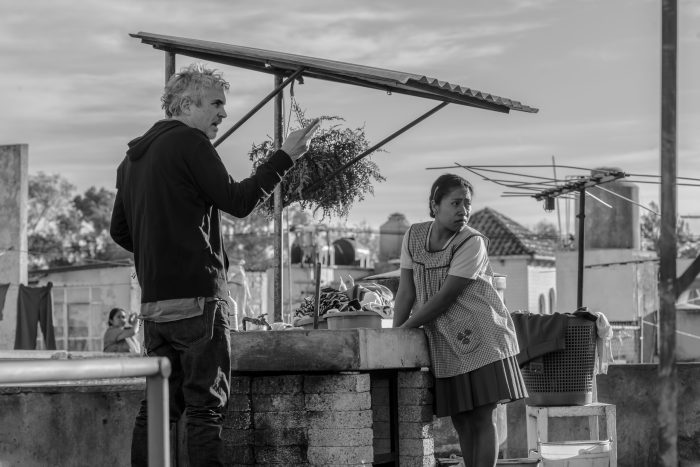
With its titular reference to Colonia Roma, Alfonso Cuarón has fashioned a vividly poetic love letter to Mexico City. Yet, the masterful storyteller’s autobiographical epic contains multitudes. It’s a transplanted Chilango’s tribute to his birthplace and an homage to the women who raised him, as well as an enthrallingly impressionistic ode to childhood memories.
Set in 1971 and told from the gentle perspective of Cleo, (a sublimely soulful Yalitza Aparicio), the family’s nanny is at the center of breathtaking visuals offered up in languorous, resplendent 65mm black-and-white. Cleo appears first on screen cleaning up after the family dog. She repeats his name, “Borras, Borras,” almost chanting in a whispery sing-song.
But quotidian duties are just a small part of Cleo’s life. Her placid face hints at reserves of complexity. We feel her affection for the family’s four children and her swallowed frustration with the adults who employ her: Sofia (Marina de Tavira), the mother struggling with a philandering husband, and stolid grandmother Señora Teresa (Veronica Garcia). We watch anxiously as adults maneuver their lives – and their large American cars – awkwardly. Family tension feels palpable. So does the student unrest in Mexico City, culminating in the devastating Corpus Christi massacre.
Thanks to Cuarón’s superb direction, editing, and cinematography, we are plunged into the midst of Cleo’s existence whether battling a pounding undertow on a Veracruz beach, opening her heart to a belligerent boyfriend, or navigating a drunken family holiday at a rambling hacienda. Her fierce devotion wrenches our hearts as we absorb how Cleo is alternately treated as a beloved member of the family and also as an outsider.
Roma’s groundbreaking sound design is as indelible as its haunting images. Nearly every scene is a stunning tableau. Consequently, this cinematic marvel makes the most potent impression when watched on the big screen. Cuarón meticulously replicated his childhood home, aided by production designer Eugene Caballero. He drew spectacularly naturalistic performances from a cast of mostly non-actors and presents his memories with a brilliant clarity and dialogue – in Spanish and Mixtec – that never stoops to sentimentality, eliciting only earned emotions. A technical marvel, the story is at once achingly intimate and epically socio-political. Cuarón’s gorgeous, revelatory opus feels recognizable even to those who grew up on the other side of the border. An exhilarating masterpiece, Roma is at once quintessentially Mexican and profoundly universal.

